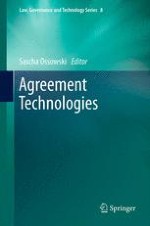2013 | OriginalPaper | Chapter
20. Adaptive Agent Organisations
Authors : Estefanía Argente, Holger Billhardt, Carlos E. Cuesta, Sergio Esparcia, Jana Görmer, Ramón Hermoso, Kristi Kirikal, Marin Lujak, José-Santiago Pérez-Sotelo, Kuldar Taveter
Published in: Agreement Technologies
Publisher: Springer Netherlands
Activate our intelligent search to find suitable subject content or patents.
Select sections of text to find matching patents with Artificial Intelligence. powered by
Select sections of text to find additional relevant content using AI-assisted search. powered by
